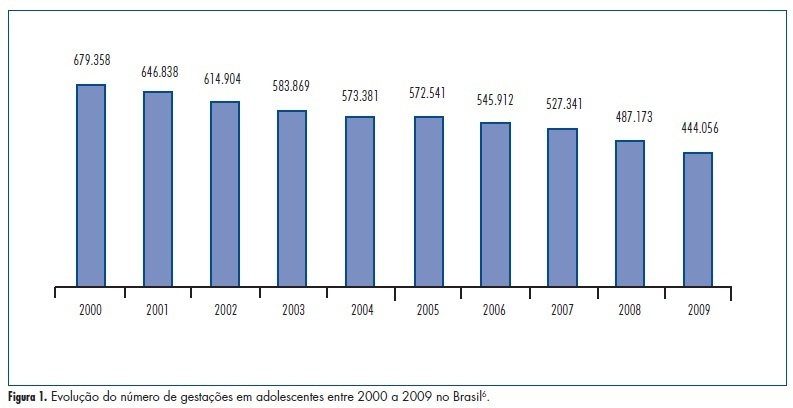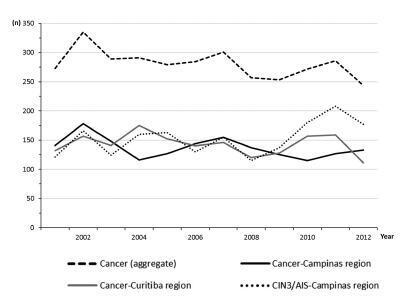Summary
Revista Brasileira de Ginecologia e Obstetrícia. 2010;32(7):346-351
DOI 10.1590/S0100-72032010000700007
PURPOSE: to compare the effectiveness of the Foley balloon with vaginal misoprostol for cervical ripening and labor induction. METHODS: randomized clinical trial, not blind, conducted from January 2006 to January 2008. A total of 160 pregnant women with indication for induction of labor were included and divided into two groups, 80 for Foley and 80 for vaginal misoprostol. Inclusion criteria were: gestational age of 37 weeks or more, a live single fetus with cephalic presentation and a Bishop score of four or less. We excluded patients with a uterine scar, ruptured membranes, estimated fetal weight greater than 4000 g, placenta previa, chorioamnionitis and conditions that imposed the immediate termination of pregnancy. Statistical tests employed were Mann-Whitney, χ2 test or Fisher's exact test, and p value was significant if less than 0.005. RESULTS: misoprostol triggered more frequently spontaneous delivery (50.0 versus 15.0% for Foley, p<0.001) and required less use of oxytocin (41.2 versus 76.2%), and this group presented more tachysystole (21.2 versus 5.0%). The Foley catheter caused more discomfort to the patient (28.7 versus 1.2%). There were no differences in the time required for development of the Bishop score (20.69 versus 21.36 hours), for triggering delivery (36.42 versus 29.57 hours) or in rates of cesarean delivery (51.2 versus 42.5%). There were no significant differences in perinatal performance, with similar rates of abnormal cardiotocography (20.0 versus 21.2%), presence of meconium (13.7 versus 17.5%) and need for neonatal intensive care unit (3.7 versus 6.2%). CONCLUSIONS: the use of the Foley catheter was as effective as misoprostol for cervical ripening, but less effective in triggering spontaneous labor. Our results support the recommendation of its use for cervical ripening, especially in patients with cesarean scar.
Summary
Revista Brasileira de Ginecologia e Obstetrícia. 2005;27(6):347-352
DOI 10.1590/S0100-72032005000600009
PURPOSE: to assess the interference of two vaginal lubricants (vaseline and silicone) in the interpretation of cervical oncotic cytology. METHODS: a prospective research on one hundred women from August to October 2003. The women were divided into two groups of 50 patients each, according to the type of lubricant used. Two smears were obtained from every patient: the first specimen soon after the introduction of non-lubricated speculum and the second after the use of lubricated speculum with vaseline (Group V) or silicone (Group S). The samples were analyzed by two cytotechnicians, who were unaware of the origin of the smears. RESULTS: among the 100 pairs of slides, 8 results were partially different. The reasons for the differences were not directly related to the use of lubricant and did not interfere with the cytologic findings. The number of discordant results was 6 in Group S and 2 in Group V, without a statistically significant difference (p=0.269). The number of satisfactory and satisfactory but limited results was statistically similar regarding the use or not of lubricant: Group S: 46 satisfactory slides and 4 satisfactory but limited slides (p=0.001 and kappa=0.802) and Group V: 48 satisfactory and 2 satisfactory but limited slides (p=0.001 and kappa=0.953). There were no unsatisfactory results. No artefacts were found in slides obtained with lubricated speculum. CONCLUSION: the use of lubricated speculum with vaseline or silicone does not affect cervical oncotic cytology outcome.
Summary
Revista Brasileira de Ginecologia e Obstetrícia. 2012;34(8):347-350

Summary
Revista Brasileira de Ginecologia e Obstetrícia. 2023;45(6):347-355
To review the literature and synthesize evidence on pathophysiological interactions attributed to the simultaneous occurrence of COVID-19 and preeclampsia.
A systematic review was conducted from November (2021) to January (2022) to retrieve observational studies published on the PubMed, LILACS, SciELO Brazil and Google Scholar databases. The search was based on the descriptors [(eclampsia OR preeclampsia) AND (COVID-19)]. Quantitative studies that pointed to pathophysiological interactions were included. Literature reviews, studies with HIV participants, or with clinical approach only were excluded. The selection of studies was standardized and the evaluation was performed by pairs of researchers.
In this review, 155 publications were retrieved; 16 met the inclusion criteria. In summary, the physiological expression of angiotensin-converting enzyme-2 (ACE-2) receptors is physiologically increased in pregnant women, especially at the placental site. Studies suggest that the coronavirus binds to ACE-2 to enter the human cell, causing deregulation of the renin-angiotensin-aldosterone system and in the ratio between angiotensin-II and angiotensin-1-7, inducing manifestations suggestive of preeclampsia. Furthermore, the cytokine storm leads to endothelial dysfunction, vasculopathy and thrombus formation, also present in preeclampsia.
The studies retrieved in this review suggest that there is a possible overlap of pathophysiological interactions between COVID-19 and preeclampsia, which mainly involve ACE-2 and endothelial dysfunction. Given that preeclampsia courses with progressive clinical and laboratory alterations, a highly quality prenatal care may be able to detect specific clinical and laboratory parameters to differentiate a true preeclampsia superimposed by covid-19, as well as cases with hypertensive manifestations resulting from viral infection.
Summary
Revista Brasileira de Ginecologia e Obstetrícia. 2018;40(6):347-353
The aim of this study was to assess the time trends and pattern of cervical cancer diagnosed in the period from 2001 to 2012 by means of an opportunistic screening program from two developed regions in Brazil.
An observational study analyzing 3,364 cancer records (n = 1,646 from Campinas and n = 1,718 from Curitiba region) available in hospital-based cancer registries was done. An additional 1,836 records of CIN3/AIS from the region of Campinas was analyzed. The statistical analysis assessed the pooled data and the data by region considering the year of diagnosis, age-group, cancer stage, and histologic type. The Cochran-Armitage trend test was applied and p-values < 0.05 were considered significant.
The total annual cervical cancer registered from2001 to 2012 showed a slight drop (273-244), with an age average of 49.5 y, 13 years over the average for CIN3/AIS (36.8 y). A total of 20.6% of the diagnoses (1.6% under 25 y) were done out of the official screening age-range. The biennial rate of diagnoses by age group for the region of Campinas showed an increase trend for the age groups under 25 y (p = 0.007) and 25 to 44 y (p = 0.003). Stage III was the most recorded for both regions, with an annual average of 43%, without any trend modification. There was an increasing trend for stage I diagnoses in the region of Campinas (p = 0.033). The proportion of glandular histologic types registered had an increased trend over time (p = 0.002), higher for the region of Campinas (21.1% versus 12.5% for the region of Curitiba).
The number, pattern and trends of cervical cancer cases registered had mild and slow modifications and reflect the limited effectivity of the opportunistic screening program, even in developed places.

Summary
Revista Brasileira de Ginecologia e Obstetrícia. 2004;26(5):347-347
Summary
Revista Brasileira de Ginecologia e Obstetrícia. 2000;22(6):347-351
DOI 10.1590/S0100-72032000000600005
Purpose: to analyze the symptoms of premenstrual syndrome (PMS), its duration, time of presentation and pathogenesis. Methods: a questionnaire was applied to 254 women aged 20 to 44 years, without gynecological or clinical conditions affecting their general state or physical well-being, excluding those with amenorreha for more than six months, hysterectomized or pregnant. Results: one hundred and ten women (43.3%) describing at least one intense symptom causing harm to their life, were considered as having PMS. Irritability was presented by 86.4%, tiredness by 70.9%, depression by 61.8%, headache by 61.8%, breast tenderness by 59.1% and abdominal pain by 54.5%. Almost all (94.5%) had more that one symptom, 89.1% presented psychological complaints, and 76.4% associated physical and psychological complaints. Most declared that duration of the symptoms was three to four days (32.4%) or five to seven days (31.4%). Conclusions: the clinical picture of PMS is generally composed of irritability and/or depression, associated with tiredness and headache or breast pain, there being association of physical and psychological symptoms, for 3 to 7 days, and it is difficult to attribute a single etiology to it at this stage of knowledge.